1.5 Inverse Functions and Logarithms
1/16
Earn XP
Description and Tags
An inverse function "undoes" another function
Name | Mastery | Learn | Test | Matching | Spaced |
|---|
No study sessions yet.
17 Terms
What is an inverse function ?
If f is a function that takes an input x and gives an output y,
y=f(x)
then its inverse function f^−1 takes y as an input and returns x:
x=f−1(y)
A function has an inverse only if it is one-to-one
One to One Function
A function f is called a one-to-one function if it never takes on
the same value twice
Horizontal Line Test
A function is one-to-one if and only if no horizontal line
intersects its graph more than once.
What makes let’s a graph have an inverse function ?
Let f be a one-to-one function with domain A and range B.
Then its inverse function f21 has domain B and range A.
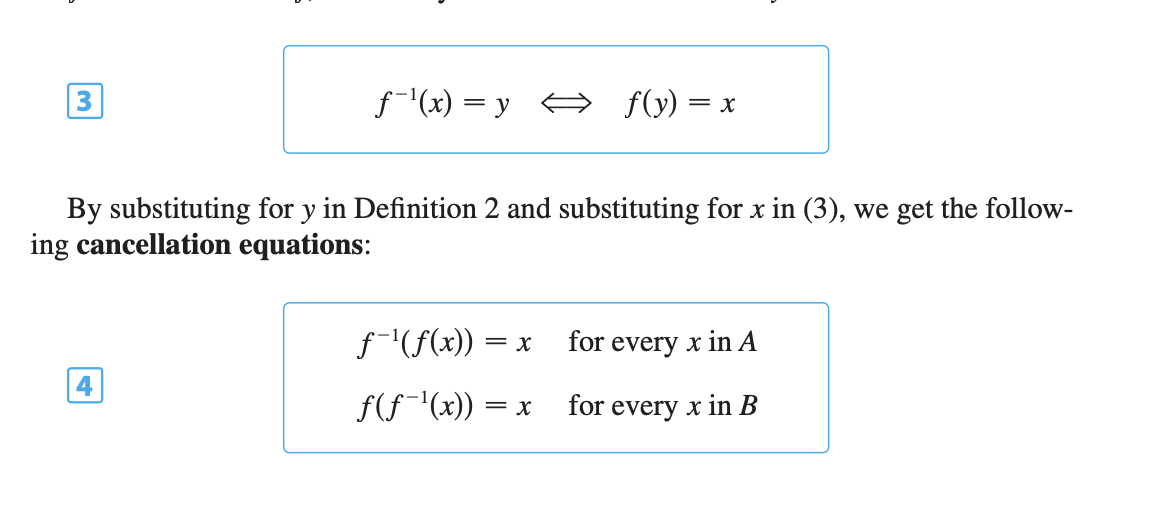
How to find the Inverse Function of a One to One Function f
STEP 1 Write y= f(x).
STEP 2 Solve this equation for x in terms of y (if possible).
STEP 3 To express f^-1 as a function of x, interchange x and y.
The resulting equation is y= f^-1(x)
What are logarithmic Functions with base b ?
Definition:
logb (x)= y if and only if by=x
Base constraints: The base
b must be positive ( b>0) and cannot equal 1 (b≠1)
Inverse relationship: Logarithmic functions are the inverse of exponential functions. If you have an exponential function like
f(x)=b^x its inverse is f^-1 (x)=log b (x)
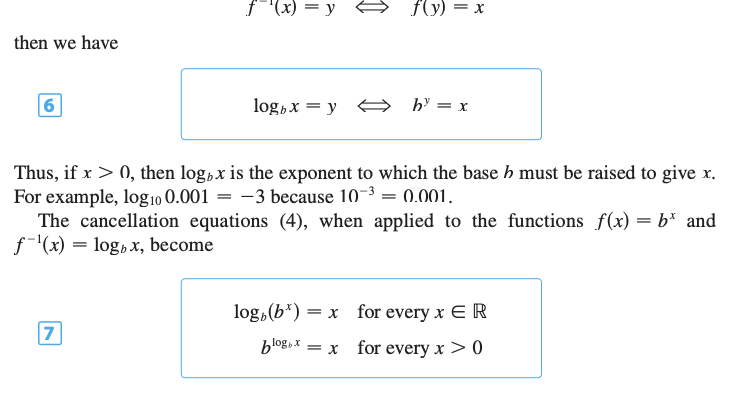
Laws of Logarithms
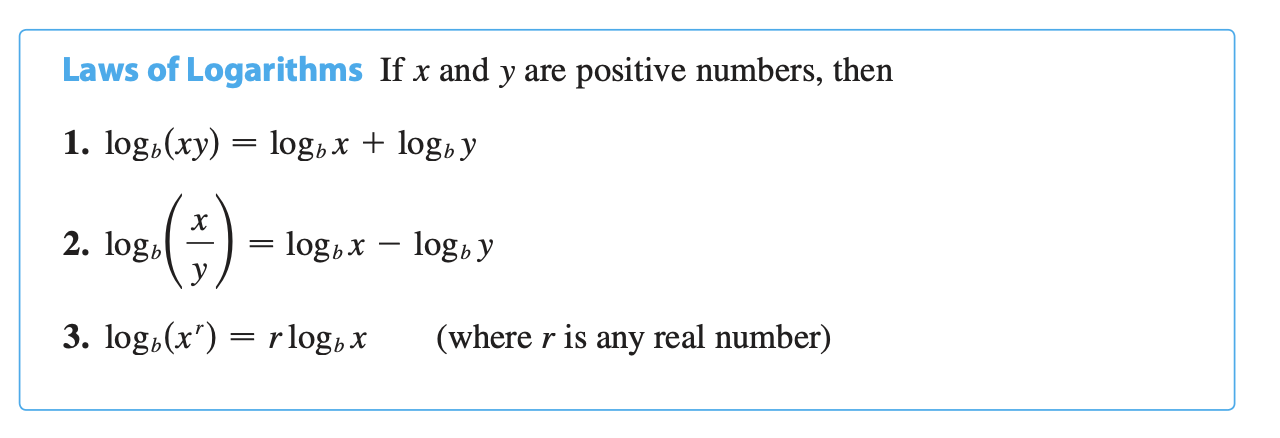
Natural Logarithms
The logarithm with base e is called the natural logarithm and has a special notation:
Natural Logarithm

Defining Properties of the Natural Logarithmic Function
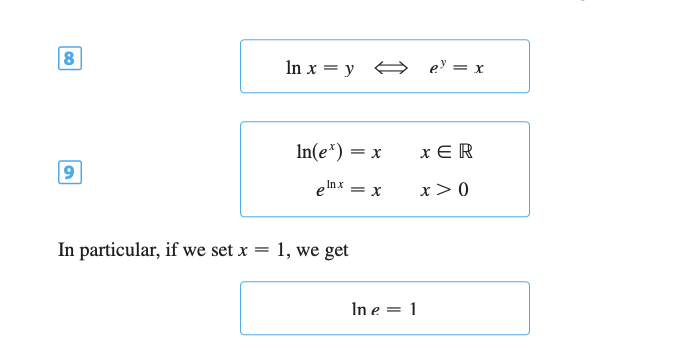
Change in Base Formula
The Change-of-Base Formula lets you rewrite a logarithm in any base using logs of another base.

Why is it difficult to find Inverse Trigonometric Functions ?
When we try to find the inverse trigonometric functions, we have a slight difficulty:
Because the trigonometric functions are not one-to-one, they don’t have inverse functions. The difficulty is overcome by restricting the domains of these functions so that they become one-to-one.
Inverse sine Function
The inverse of the sine function is called the arcsine function,
written as:
sin−1(x) or arcsin(x)
Definition:
y=arcsin(x)⟺sin(y)=x
So the arcsine function undoes the sine function.

The Inverse Cosine Function
The inverse cosine function is called arccosine, written as
cos−1(x) or arccos(x)
Definition: y= arccos(x)⟺cos(y)=x
So the inverse cosine function undoes the cosine function.
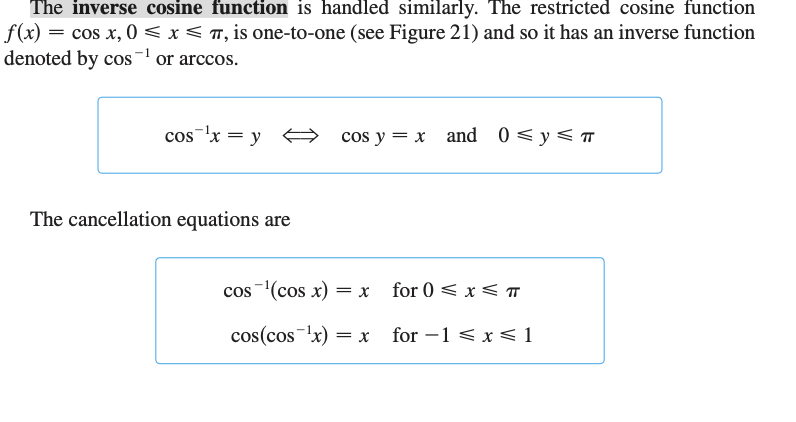
Inverse Tangent Function
The inverse tangent function is called arctangent, written as
tan−1(x) or arctan(x)
Definition: y=arctan(x)⟺tan(y)=x
So the inverse tangent function undoes the tangent function